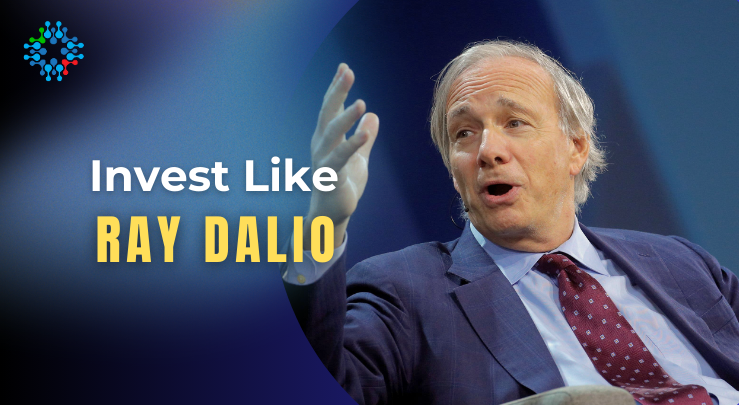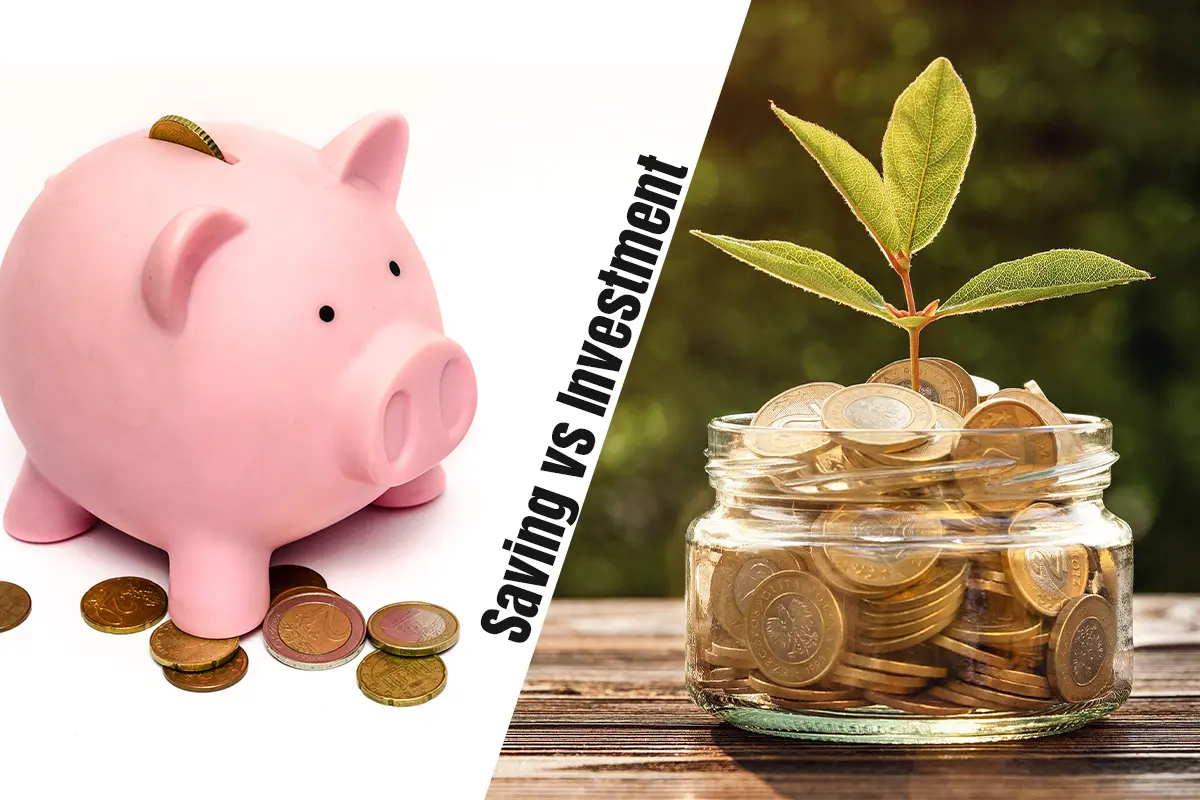
- Event
- April 9, 2024
Architecting Wealth: Ray Dalio’s Blueprint for Investment Success
Meet Ray Dalio
In the heart of New York City, 1949, Ray Dalio embarked on a journey that would redefine the investment world. Today, as a billionaire investor and the mastermind behind Bridgewater Associates, Dalio oversees $160 billion, making it not only the largest hedge fund globally but also among the most successful. Originating from a family where jazz was the norm, Dalio instead displayed an early acumen for finance. At the tender age of 12, he started working as a caddie on a golf course where a lot of the people often discussed stock trading. Inspired by this, he splashed his $300 savings on shares of Northeast Airlines, a now-defunct regional carrier. His investment eventually tripled when control of Northeast was acquired by legendary aviation mogul Howard Hughes. Dalio was clearly onto something….
Dalio’s academic pursuits at Harvard Business School were followed by professional tenures at the New York Stock Exchange and various investment banks. In 1975, he established Bridgewater from his apartment, focusing on global macro investment strategies, which would later propel the firm to unprecedented heights, especially during the 2007 financial crisis, predicting and profiting from the economic downturn.
In August 2007, Dalio made headlines with his predictions that the world was on the brink of financial crisis. He was soon proven right – and while most of his peers hemorrhaged money in the subsequent years, Bridgewater managed to turn a profit. In fact, Dalio’s money-making prowess is nothing short of phenomenal: since the firm’s inception, Bridgewater has made over $50 billion in net investment profits, more than any other hedge fund in the world.
The underpinning of Dalio’s extraordinary success lies in his unwavering commitment to a series of investment principles he has honed over decades. These principles have been generously shared through speeches, memos, and notably, his 2017 bestseller, “Principles.” At the core of Dalio’s philosophy is the belief in the omnipresence of cause-and-effect relationships, with the potential for substantial profit if these dynamics can be understood and leveraged correctly, particularly in commodities trading.
Above all, Dalio believes that cause-and-effect relationships exist almost everywhere – and that if you can figure them out, there’s money to be made. When investing in commodities like soybeans and corn, for example, Dalio would forecast demand by looking at how many cattle, chicken, and hogs were being fed and how much grain they ate: one of the “causes” in the cause-effect dyad. To estimate supply, he’d look at how much soybean and corn acreage was being planted and how rainfall affected their yields – another “cause”. Dalio would then reconcile these two causes to arrive at the “effect” – how grain prices were likely to move in the future – and use that to profitably trade soybeans and corn.
Another key principle is diversification, which Dalio views as the holy grail of investing. This is especially true when it comes to different asset classes – groups of similar assets such as stocks, bonds, real estate, and so on – that don’t move in the same way in a given economic environment. Specifically, Dalio believes 15 such “uncorrelated” investments can reduce a portfolio’s risk by 80% without sacrificing any significant return. Who said there’s no such thing as a free lunch?
He’s also an advocate for being radically open-minded. That means trying to avoid having any biases – and to accept when you’re wrong. No one knows this better than Dalio: in the early 1980s, he lost almost everything betting that the economy was about to head south, even testifying in Congress and on TV to that effect. When meltdown failed to materialize, the resulting losses forced Dalio to dismiss all his employees as he could no longer afford to pay them…
Strategic Asset Allocation & Risk Parity
Dalio’s contributions to the field extend to strategic asset allocation and risk parity, a concept pioneered by Bridgewater that focuses on balancing risk across various asset classes rather than dividing capital arbitrarily. This method laid the groundwork for the creation of the All-Weather Portfolio, designed to withstand any economic condition by balancing investments across asset classes that respond distinctly to economic growth and inflation cycles.
Before we dive into a discussion of Ray Dalio’s famous All-Weather Portfolio, even seasoned investors may benefit from a reminder about strategic asset allocation
Strategic asset allocation involves building a portfolio based on target allocations for different asset classes, and then rebalancing that portfolio regularly to make sure it stays that way. One well-known allocation is the “60/40 portfolio” – where an investor places 60% of their portfolio in stocks and 40% in bonds. A year later, stocks may have performed well but bonds declined – causing the portfolio’s value to skew 65% stocks and 35% bonds. Since that’s a deviation from their initial targets, the investor will then sell stocks and buy bonds to bring the whole portfolio back to a 60/40 split. So far, so simple. But how – and why – is such a mix determined in the first place?
The general idea is to have an allocation that provides a certain balance between risk and return over a long time horizon, tailored to the investor’s goals and therefore their risk tolerance.
As Dalio himself puts it:
“The most important thing you can have is an excellent strategic asset allocation mix. In other words, you’re not going to win by trying to get what the next tip is – what’s going to be good and what’s going to be bad. You’re definitely going to lose. So what the investor needs to do is have a balanced, structured portfolio – a portfolio that does well in different environments.”
– Ray Dalio
One of strategic asset allocation’s benefits, in other words, is that it’s diversified across different asset classes that tend not to move in lockstep – both reducing risk and allowing a portfolio to hold up well in different environments. Infrequent rebalancing, meanwhile, means less wasted money on trading fees and better tax treatment.
One of the main criticisms of strategic asset allocation, however, is that it’s too focused on arbitrary capital allocation rather than risk allocation. A typical 60/40 portfolio, for example, splits money between two types of investments that don’t tend to move in the same direction. But the problem is that stocks are a lot more volatile than bonds, and a 60/40 mix means the bulk of a portfolio’s risk is coming from stocks’ piece of the pie – as illustrated below.

While you might think a 60/40 strategy delivers a well-diversified portfolio, in reality its performance will closely follow that of the stock market. That’s the problem risk parity – a technique pioneered by Dalio’s Bridgewater Associates – is trying to solve. The aim of a risk parity portfolio is to set the asset class weightings such that the contribution to overall portfolio risk from each asset class is the same – as illustrated below. In practice, this means lower exposure to stocks than traditional portfolios (due to their higher volatility) and more exposure to bonds.

Not only did Dalio pioneer the risk parity approach, but Bridgewater Associates also created the first risk parity fund: the All-Weather Portfolio. More on that next…
The “All-Weather Portfolio”
Ray Dalio created the All-Weather Portfolio in the mid-1990s. He wanted to invest his and his family’s accumulated wealth in a way that would prosper regardless of the economic environment; a portfolio that “will do reasonably well 20 years from now even if no one can predict what form of growth and inflation will prevail.” Today, virtually all of Dalio’s family wealth is invested in the All-Weather Portfolio – and Bridgewater Associates also has around $80 billion of client cash invested in the strategy.
So what’s in it? Dalio spilled the beans on a basic version of the All-Weather Portfolio during an interview, and it consisted of the following: 40% in long-term Treasuries (US government bonds with over 20 years left till maturity), 30% in US stocks, 15% in intermediate-term Treasuries (US government bonds with 7-10 years left till maturity), 7.5% in gold, and 7.5% in other commodities.

You can see risk parity at play here. Bonds, which tend to have the least volatility, have the highest weighting in the portfolio. Stocks come second; while commodities, typically the most volatile investments, have the smallest weighting. Based on the above, the contribution to overall portfolio risk from each asset class is roughly the same.️
That explains the weightings – but why did Dalio choose these investments in particular? It goes back to his principles of cause-effect relationships, diversification, and the market undergoing long-term cycles. Dalio purposely wanted a portfolio spread across asset classes whose characteristics are best suited to different parts of the cycle, which Dalio defines in two dimensions: rising/falling economic growth and rising/falling inflation. These are the “causes” which lead to the “effect” of diverging asset class performance.
To illustrate this, let’s go back to the three main asset classes that make up the All-Weather Portfolio: stocks, bonds, and commodities. During periods of rising economic growth, company profitability tends to increase and stocks do well. So do commodities: rising economic growth means increased demand for resources and higher commodity prices. During periods of falling economic growth, however, investors swap stocks for bonds as the latter offer a more dependable return. Central banks may also lower interest rates to help stimulate the economy – making existing bonds more attractive and also helping to push their prices up.
As for inflation, gold and commodities are real assets: physical assets with intrinsic value that become more popular when inflation is rising and eroding the extrinsic value of money. But when inflation is falling, bonds do well instead as the fixed amount of cash they offer investors becomes worth more. A $100 payout five years from now will be more valuable if the price of food and housing stays the same compared to a scenario where their prices double over that period.
So by having a diversified mix of these asset classes, and having each one contribute an equal amount to overall risk, the All-Weather Portfolio is designed to do well in all economic environments – at least in theory. That’s why it’s called “All-Weather”, after all…
The biggest advantage of the All-Weather Portfolio is probably this resilience in different economic environments. Another is that its passive strategy doesn’t require you to predict future economic conditions: remember Dalio’s principle of being open-minded and accepting the fact that we don’t know what the future holds? It’s a buy-and-hold strategy that demands occasional rebalancing rather than frequent trading – again, reducing fees and protecting investors from their own worst enemy: themselves.
One of the All-Weather Portfolio’s drawbacks, though, is that it’s very US-focused – with no room for international stocks or bonds. And while the strategy has performed well over the long term, it’s occasionally experienced protracted stretches of underperformance – and has historically returned less than the S&P 500 index of the largest US stocks. Finally, as the savvier among you will have noticed, the portfolio has a very high allocation to bonds (55% in total) and may not perform well during a sustained period of rising interest rates. We’ll address these points in more detail next.
In this Guide, you’ve learned:
🔹 Ray Dalio is a successful investor who sticks to a series of investment principles, including cause-and-effect relationships, riding long-term trends, diversification, and being radically open-minded.
🔹 Strategic asset allocation is a sensible investment strategy, albeit one which aims to divide cash rather than risk – and that’s the problem Dalio’s risk parity approach seeks to solve.
🔹 Dalio’s All-Weather Portfolio, constructed using risk parity weightings for certain stocks, bonds, and commodities, is designed to perform well in all economic environments.
🔹 The All-Weather Portfolio’s historical risk-adjusted returns are impressive, but some put this down to it riding a decades-long bond bull market – which might not last forever.
🔹 You can construct your own All-Weather Portfolio using simple ETFs if the strategy ticks your boxes, but make sure you’re aware of the risks and fees involved.
Be the first to review “Message Financial Board Game Cancel Reply
RELATED POSTS

- Finance
- September 30, 2024

- Finance
- September 26, 2024

- Finance
- September 23, 2024












Touche. Solid arguments. Keepp up the good spirit. https://Lvivforum.PP.Ua/